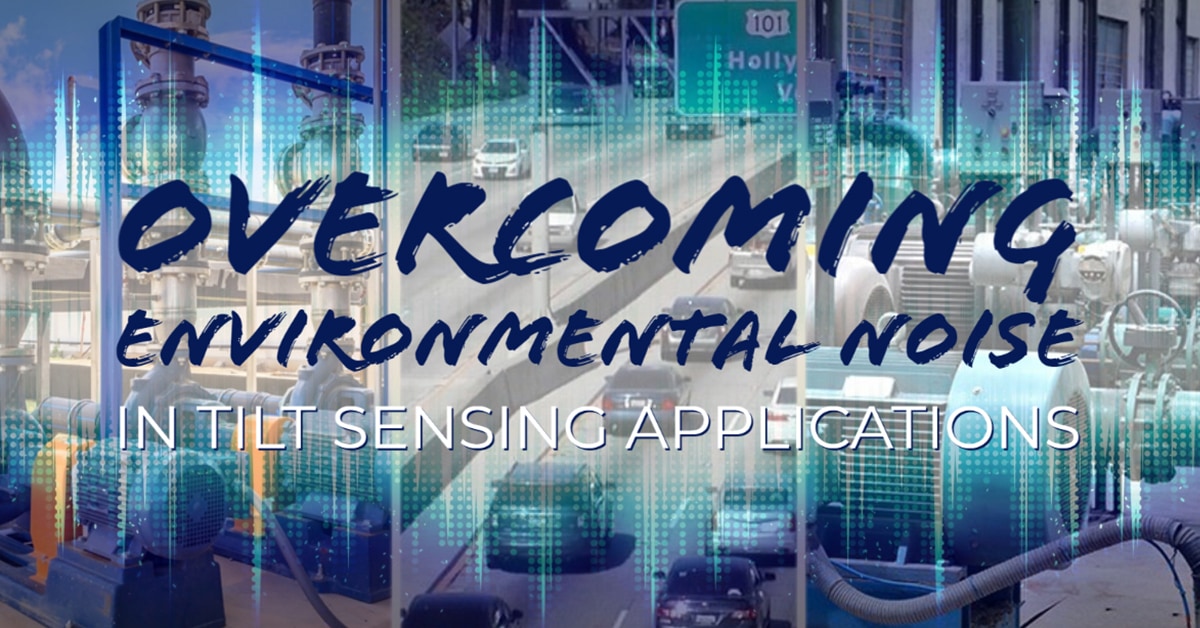Users of force balance inclinometers and tilt sensors can often see high noise in the field. Understanding the device is critical to solving the problem. A force balance inclinometer, or tilt sensor, is a high resolution, extremely accurate force balance accelerometer which is responding to the acceleration of Earth’s gravity to determine the angle of tilt. The distinction between an inclinometer and an accelerometer is one of application, not operation.
When a force balance accelerometer is used as an inclinometer, it has an extremely low range and is characterized by exceedingly high resolution, superior repeatability, and remarkable precision. Most inclinometers have a factor set range that the customer selects. Typical ranges are available from as low as ±0.5° to ±90°. To give you an idea of the capability of the force balance technology, a common range for an inclinometer is ±1°, which is a nominal scale factor of 286.5V/g for a sensor with a ±5V signal output. If that same sensor is ranged to ±0.5° it has a nominal scale factor of 573V/g. These sensors have exceptionally high sensitivity capability, and combined with their ability to resolve very low inputs allows them to detect extremely small or distant vibrations easily.
When using an accelerometer to measure tilt, it is important to remember that the device will respond to vibration within its bandwidth. Given the sensor’s extreme resolution, it will detect and respond to very low amplitude vibration. This vibration is often is so small that it is not perceived by the user. Because the user doesn’t feel the vibration, the visual appearance of the vibration is typically misinterpreted as electrical noise from the sensor. Force balance accelerometers are often used to measure seismic events and can detect them at great distances. The response to unwanted vibration, often called environmental or seismic noise can be difficult to eliminate. Seismic and environmental noise can include motors, compressors, pumps, or even traffic. It would not be unusual for a force balance accelerometer to detect the vibration caused by airplanes landing at a nearby airport.
There are common methods to reduce vibration, such as using foam or vibration damping devices, which can actually amplify the vibration and affect the intended measurement. Another common method of reducing environmental noise is to reduce the frequency response of the sensor so that the frequency of the vibration is outside the bandwidth of the sensor. This can be done by the sensor’s manufacturer by reducing the servo bandwidth or by implementing electronic filters. Filtering is the most common method but can cause a problem if the amplitude of the vibration is high enough to cause the sensor output to clip. In this case, reducing the servo bandwidth at the factory is the best solution. However, the trade-off in using a filter to reduce the environmental noise is a delay.
Using a filter to reduce environmental noise can typically be very effective, but can also be difficult to implement. This is because it is often difficult for the user to determine the appropriate corner frequency that will not only eliminate the environmental noise but also won’t interfere with the desired measurement or cause an unacceptable delay. Many times it isn’t practical for the user to determine the best corner frequency as it can be difficult to measure the environmental noise or use a variable filter. Jewell Instruments’ experienced engineers use their expertise from similar applications and environments to help our customers determine the best solution. Jewell can also customize sensors to fit the application by including an internal filter or reducing the servo bandwidth when it’s appropriate. Overcoming environmental noise within an application can be challenging but Jewell partners with its customers to provide the best solution possible every time.
